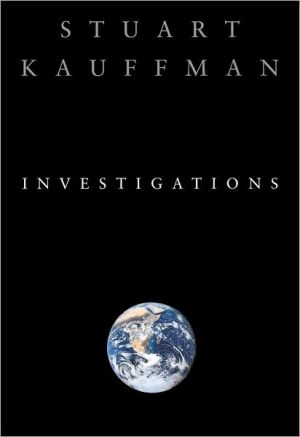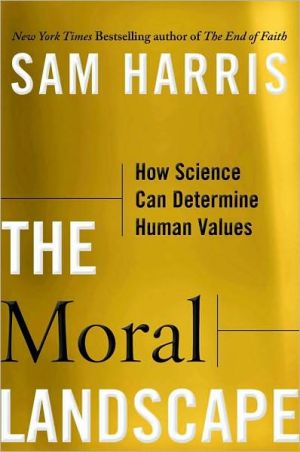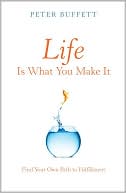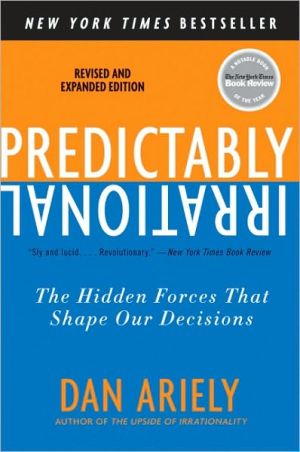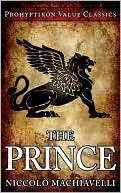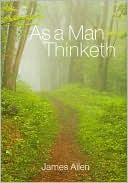Investigations
"It may be that I have stumbled upon an adequate description of life itself." \ These modest yet profound words trumpet an imminent paradigm shift in scientific, economic, and technological thinking. In the tradition of Schrodinger's classic What Is Life?, Kauffman's Investigations is a tour-de-force exploration of the very essence of life itself, with conclusions that radically undermine the scientific approaches on which modern science rests—the approaches of Newton, Boltzman, Bohr, and...
Search in google:
A breakthrough in our understanding of life on this planet and throughout the universe.
1. Prolegomenon to a General Biology\ Lecturing in Dublin, one of the twentieth century's most famous physicists set the stage of contemporary biology during the war-heavy year of 1944. Given Erwin Schrodinger's towering reputation as the discoverer of the Schrodinger equation, the fundamental formulation of quantum mechanics, his public lectures and subsequent book were bound to draw high attention. But no one, not even Schrodinger himself, was likely to have foreseen the consequences. Schrodinger's What Is Life? is credited with inspiring a generation of physicists and biologists to seek the fundamental character of living systems. Schrodinger brought quantum mechanics, chemistry, and the still poorly formulated concept of "information" into biology. He is the progenitor of our understanding of DNA and the genetic code. Yet as brilliant as was Schrodinger's insight, I believe he missed the center. Investigations seeks that center and finds, in fact, a mystery. \ In my previous two books, I laid out some of the growing reasons to think that evolution was even richer than Darwin supposed. Modern evolutionary theory, based on Darwin's concept of descent with heritable variations that are sifted by natural selection to retain the adaptive changes, has come to view selection as the sole source of order in biological organisms. But the snowflake's delicate sixfold symmetry tells us that order can arise without the benefit of natural selection. Origins of Order and At Home in the Universe give good grounds to think that much of the order in organisms, from the origin of life itself to the stunning order in the development of a newborn child from a fertilized egg, does not reflectselection alone. Instead, much of the order in organisms, I believe, is self-organized and Spontaneous. Self-organization mingles with natural selection in barely understood ways to yield the magnificence of our teeming biosphere. We must, therefore, expand evolutionary theory.\ Yet we need something far more important than a broadened evolutionary theory. Despite any valid insights in my own two books, and despite the fine work of many others, including the brilliance manifest in the past three decades of molecular biology, the core of life itself remains shrouded from view. We know chunks of molecular machinery, metabolic pathways, means of membrane biosynthesis-we snow many of the parts and many of the processes. But what makes a cell alive is ;till not clear to us. The center is still mysterious.\ And so I began my notebook "Investigations" in December of 1994, a full half century after Schrodinger's What Is Life?, as an intellectual enterprise unlike any I had undertaken before. Rather bravely and thinking with some presumptuousness :)f Wittgenstein's famous Philosophical Investigations, which had shattered the philosophical tradition of logical atomism in which he had richly participated, I retook myself to my office at home in Santa Fe and grandly intoned through my fingers onto the computer's disc, "Investigations," on December 4,1994. I sensed my long search would uncover issues that were then only dimly visible to me. I toped the unfolding, ongoing notebook would allow me to find the themes and .ink them into something that was vast and new but at the time inarticulate.\ Two years later, in September of 1996, I published a modestly well-organized version of Investigations as a Santa Fe Institute preprint, launched it onto the web, and put it aside for the time being. I found I had indeed been led into arenas that I tad in no way expected, led by a swirl of ever new questions. I put the notebooks aside, but a year later I returned to the swirl, taking up again a struggle to see some:hing that, I think, is right in front of us-always the hardest thing to see. This book is the fruit of these efforts. And this first chapter is but an introduction, in brief, to :he themes that will be explained more fully in the following chapters. I would ask :he reader to be patient with unfamiliar terms and concepts.\ My first efforts had begun with twin questions. First, in addition to the known laws of thermodynamics, could there possibly be a fourth law of thermodynamics For open thermodynamic systems, some law that governs biospheres anywhere in :he cosmos or the cosmos itself? Second, living entities-bacteria, plants, and animals-manipulate the world on their own behalf: the bacterium swimming upstream in a glucose gradient that is easily said to be going to get "dinner"; the paramecium, cilia beating like a Roman warship's oars, hot after the bacterium; we humans earning our livings. Call the bacterium, paramecium, and us humans "autonomous agents," able to act on our own behalf in an environment.\ My second and core question became, What must a physical system be to be an autonomous agent? Make no mistake, we autonomous agents mutually construct our biosphere, even as we coevolve in it. Why and how this is so is a central subject of all that follows.\ From the outset, there were, and remain, reasons for deep skepticism about the enterprise of Investigations. First, there are very strong arguments to say that there can be no general law for open thermodynamic systems. The core argument is simple to state. Any computer program is an algorithm that, given data, produces some sequence of output, finite or infinite. Computer programs can always be written in the form of a binary symbol string of 1 and o symbols. All possible binary symbol strings are possible computer programs. Hence, there is a countable, or denumerable, infinity of computer programs. A theorem states that for most computer programs, there is no compact description of the printout of the program. Rather, we must just unleash the program and watch it print what it prints. In short, there is no shorter description of the output of the program than that which can be obtained by running the program itself. If by the concept of a "law" we mean a compact description, ahead of time, of what the computer program will print then for any such program, there can be no law that allows us to predict what the program will actually do ahead of the actual running of the program.\ The next step is simple. Any such program can be realized on a universal Turing machine such as the familiar computer. But that computer is an open nonequilibrium thermodynamic system, its openness visibly realized by the plug and power line that connects the computer to the electric power grid. Therefore, and I think this conclusion is cogent, there can be no general law for all possible nonequilibrium thermodynamic systems.\ So why was I conjuring the possibility of a general law for open thermodynamic systems? Clearly, no such general law can hold for all open thermodynamic systems.\ But hold a moment. It is we humans who conceived and built the intricate assembly of chips and logic gates that constitute a computer, typically we humans who program it, and we humans who contrived the entire power grid that supplies the electric power to run the computer itself. This assemblage of late-twentiethcentury technology did not assemble itself. We built it.\ On the other hand, no one designed and built the biosphere. The biosphere got itself constructed by the emergence and persistent coevolution of autonomous agents. If there cannot be general laws for all open thermodynamic systems, might there be general laws for thermodynamically open but self-constructing systems such as biospheres? I believe that the answer is yes. Indeed, among those candidate laws to be discussed in this book is a candidate fourth law of thermodynamics for such self-constructing systems.\ To roughly state the candidate law, I suspect that biospheres maximize the average secular construction of the diversity of autonomous agents and the ways those agents can make a living to propagate further. In other words, on average, biospheres persistently increase the diversity of what can happen next. In effect, as we shall see later, biospheres may maximize the average sustained growth of their own "dimensionality."\ Thus, the enterprise of Investigations soon began to center on the character of the autonomous agents whose coevolution constructs a biosphere. I was gradually led to a labyrinth of issues concerning the core features of autonomous agents able to manipulate the world on their own behalf. It may be that those core features capture a proper definition of life and that definition differs from the one Schrodingerfound.\ To state my hypothesis abruptly and without preamble, I think an autonomous agent is a self-reproducing system able to perform at least one thermodynamic work cycle. It will require most of this book to unfold the implications of this tentative definition.\ Following an effort to understand what an autonomous agent might bewhich, as just noted, involves the concept of work cycles-I was led to the concepts of work itself, constraints, and work as the constrained release of energy. In turn, this led to the fact that work itself is often used to construct constraints on the release of energy that then constitutes further work. So we confront a virtuous cycle: Work constructs constraints, yet constraints on the release of energy are required for work to be done. Here is the heart of a new concept of "organization" that is not covered by our concepts of matter alone, energy alone, entropy alone, or information alone. In turn, this led me to wonder about the relation between the emergence of constraints in the universe and in a biosphere, and the diversification of patterns of the constrained release of energy that alone constitute work and the use of that work to build still further constraints on the release of energy. How do biospheres construct themselves or how does the universe construct itself? ...
Preface1Prolegomenon to a General Biology12The Origins of Life233Autonomous Agents494Propagating Organization815A Physics of Semantics?1096Emergence and Story: Beyond Newton, Einstein, and Bohr?1197The Nonergodic Universe: The Possibility of New Laws1418Candidate Laws for the Coconstruction of a Biosphere1599The Persistently Innovative Econosphere21110A Coconstructing Cosmos?243Epilogue267References271Index273
